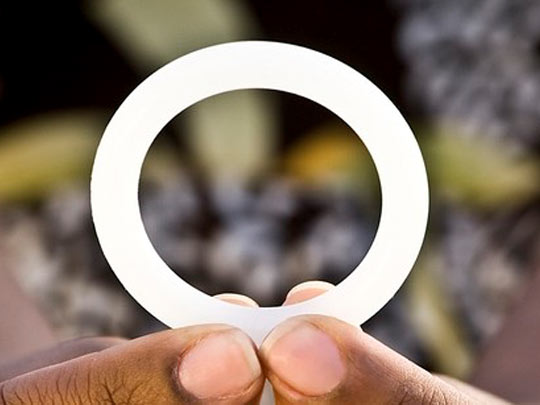Microbicides
Topics
What Are Microbicides?
Microbicides are experimental products that could be applied to or inserted into the vagina or rectum to safely prevent HIV acquisition. A microbicide would deliver an anti-HIV drug to the mucus membranes lining the surface of the vagina or rectum through materials such as vaginal rings, gels, films, inserts, suppositories, foams, or enemas. A safe, effective, desirable, and affordable microbicide against HIV would expand the number of biomedical HIV prevention options available. That’s why researchers are working to develop them. But none are on the market yet.
Can Microbicides Prevent HIV?
Research studies have shown that some microbicides do offer a modest level of protection against getting HIV.
For example, several large-scale research studies over the past decade have investigated the safety and effectiveness of long-acting vaginal rings that continuously release one or more antiretroviral drugs over time. The ring at the most advanced stage of research is the monthly dapivirine ring, which was tested in two large clinical trials, including the NIH-funded ASPIRE study. This study and another trial called The Ring StudyExit Disclaimer found that the dapivirine ring reduced the risk of HIV acquisition by roughly 30% overall in women ages 18 to 45 years and was well-tolerated.

Credit: International Partnership for Microbicides
The European Medicines Agency (EMA) adopted a positive scientific opinion on the monthly dapivirine vaginal ring in 2020 and the World Health Organization (WHO) subsequently recommendedExit Disclaimer the ring as part of combination prevention approaches for women at substantial risk for acquiring HIV, representing even further progress. If approved by national regulatory agencies, the monthly ring would provide women with a discreet, long-acting HIV prevention option that they can control.
NIH is also supporting three studies to examine the safety of the monthly dapivirine ring during adolescence and pregnancy, when the risk of HIV acquisition is heightened, and during periods of breastfeeding, when transmission to infants may occur Researchers also are evaluating a 90-day dapivirine ring.
Other studiesExit Disclaimer are examining potential rectal microbicide gels to reduce the risk of HIV transmission through anal sex. Some of these studies are testing microbicides originally formulated for vaginal use to determine if they are safe, effective, and acceptable when used in the rectum; others focus on the development of products designed specifically for rectal use.
Learn more about NIAID’s research on both vaginal and rectal microbicides.
Why Are Microbicides Important?
The only currently licensed biomedical HIV prevention method is a daily pill taken orally for pre-exposure prophylaxis (PrEP). Oral PrEP is safe and highly effective when taken daily as prescribed. However, a daily pill can be challenging for some people to take, so other forms of biomedical HIV prevention such as microbicides are being explored.
For some women, microbicides may offer certain benefits. For example, some women may find microbicides preferable to condoms as an HIV prevention option because women would not have to negotiate their use with a sexual partner. Given that women and girls are at particularly high risk for HIV in many parts of the world, it is especially important to have an effective, desirable, woman-initiated HIV prevention tool. In the future, it may also be possible to formulate products that combine HIV prevention with contraception.
Rectal microbicides would also offer another HIV prevention option for men or women who engage in anal sex.
Are Microbicides Available to the Public?
No microbicide for HIV prevention has received regulatory approval to be marketed yet. However, The International Partnership for Microbicides, which developed the monthly dapivirine vaginal ring, has applied for regulatory review of the product in countries in eastern and southern Africa, where HIV incidence among women remains high, and in the United States. Meanwhile, research on other formulations and forms of microbicides continues.
For now, available forms of protection against the sexual transmission of HIV continue to be:
- Treatment as Prevention (a highly effective strategy in which people with HIV take antiretroviral therapy as prescribed to achieve an undetectable viral load, which prevents the transmission of HIV to their sexual partners)
- Daily oral PrEP
- Voluntary medical male circumcision
- HIV testing—so that you know your and your partner’s HIV status
- Using condoms consistently and correctly
- Choosing sexual behaviors that have lower risk of HIV transmission
- Reducing the number of people you have sex with
The more of these actions you take, the safer you will be. To learn more, see Lower Your Sexual Risk for HIV.